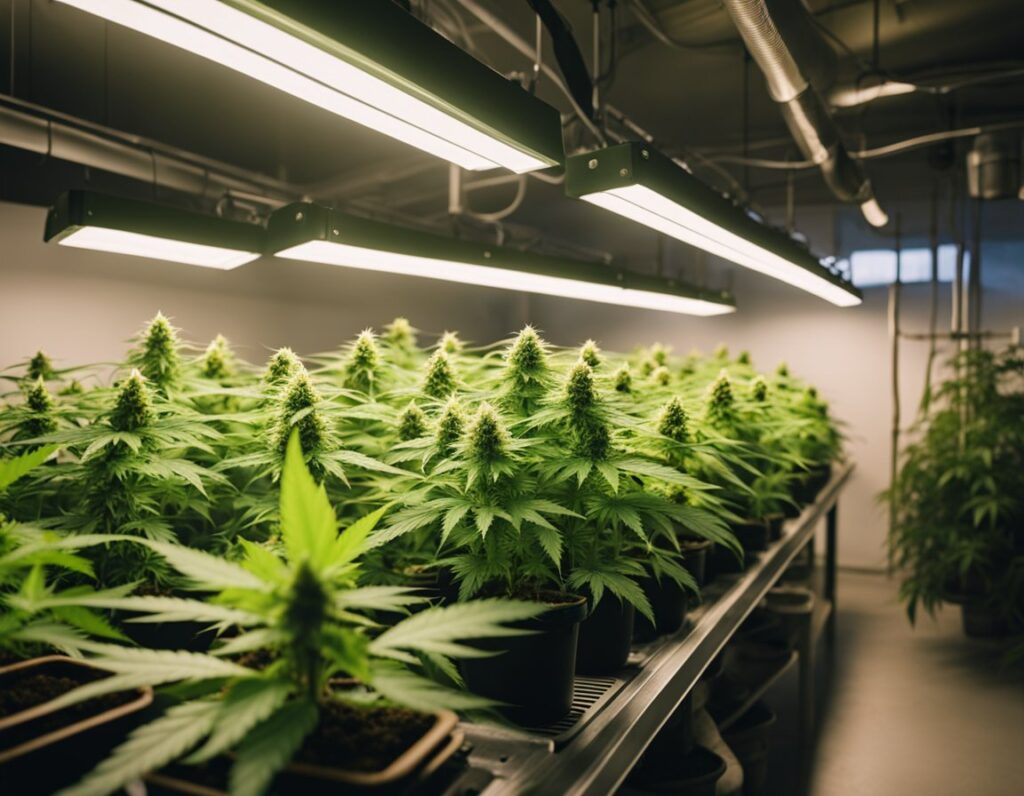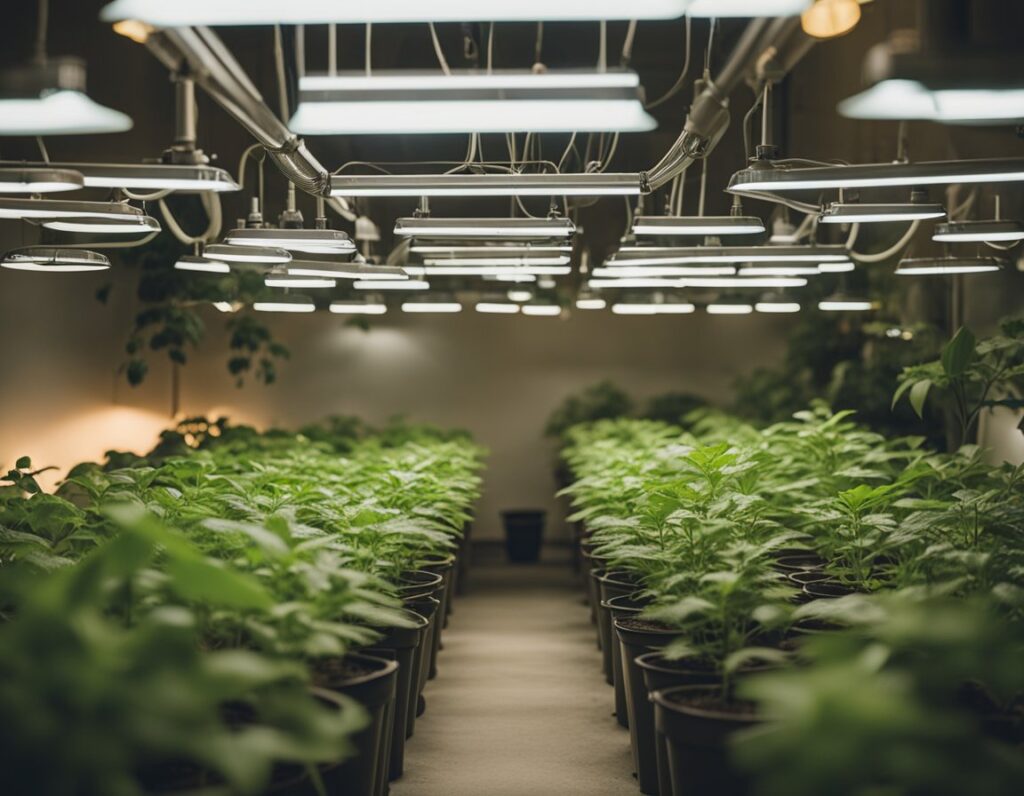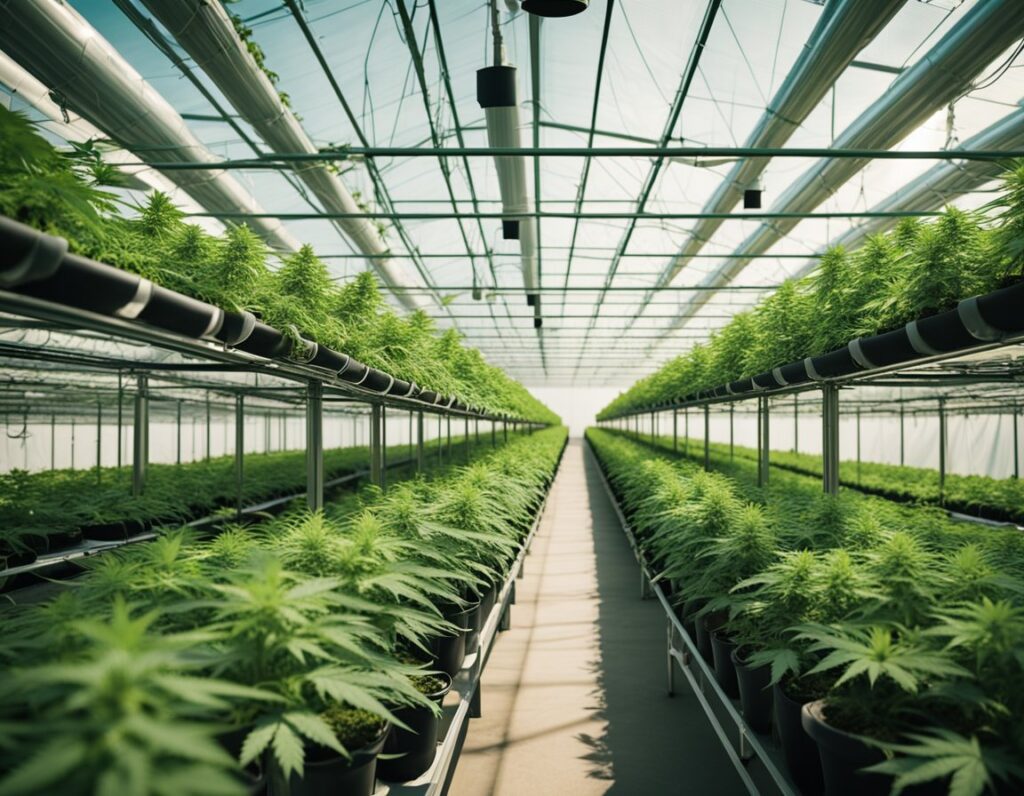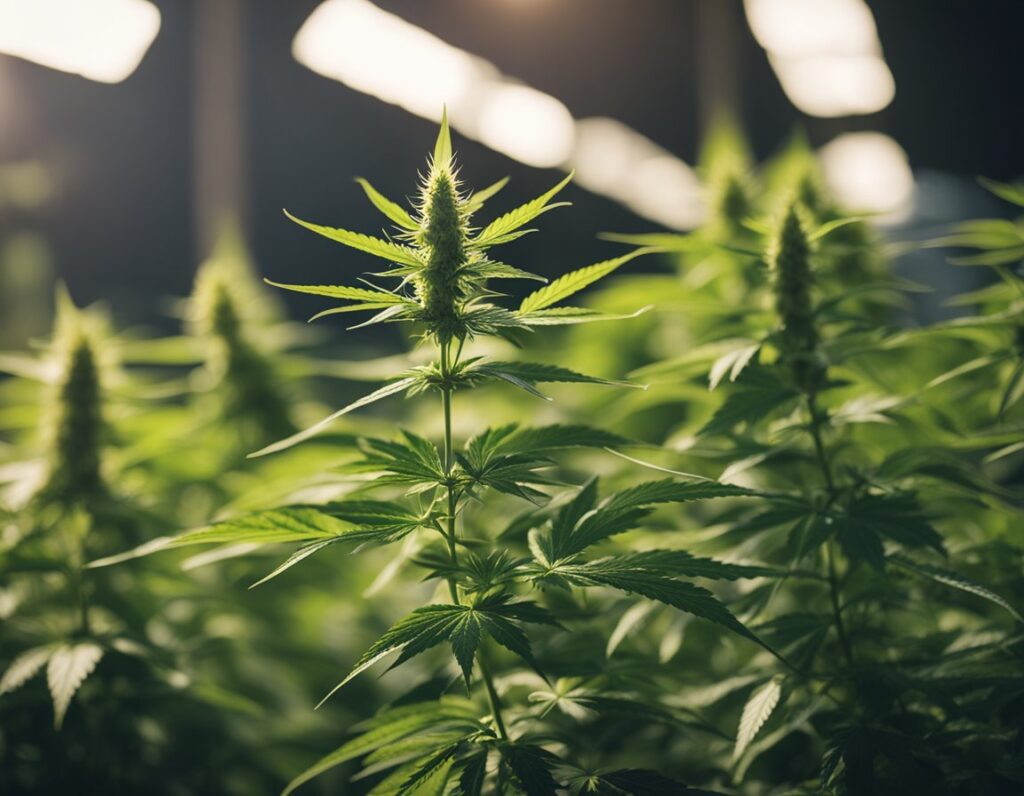
Successful cannabis cultivation involves selecting the right genetics and understanding the range of terpenes and cannabinoids present in your plants. Each element affects growth, yield, and the plant’s overall profile.
Selecting the right cannabis strains begins with understanding genetics. Different strains exhibit unique growth patterns, resistances, and flowering times. Indicas tend to be bushier, while Sativas grow taller, often taking longer to mature.
Hybrid strains offer varied characteristics, blending attributes of both Indica and Sativa. Consider resilience to local pests and climate conditions when choosing genetics. Additionally, some strains are specifically bred for higher yields or unique flavors, which can significantly influence your cultivation success.
Pay attention to seed quality as it directly impacts yield and plant health. Start with reputable seed banks to ensure you’re getting top-tier genetics.
Cannabis plants are rich with terpenes and cannabinoids, two critical compounds influencing the plant’s effects and flavors. Terpenes are aromatic compounds that give cannabis its unique smell, with familiar scents like pine or citrus.
Cannabinoids, including THC and CBD, are central to the plant’s psychoactive effects. Understanding your desired balance of these compounds will guide you in selecting the right strains for your cultivation.
Different ratios of THC to CBD can yield varying effects, from relaxation to energizing experiences. Monitor each strain’s terpene profile to identify its smell and potential therapeutic benefits. This knowledge aids in cultivating plants tailored to specific needs or market demands.

Indoor cultivation of Cookies seeds offers various advantages for growers who seek control over their growing conditions. Understanding different cultivation systems, the benefits of climate control, and ways to enhance trichome and terpene production can lead to successful indoor cannabis yields.
When growing indoors, you can choose between hydroponics and soil-based systems. Hydroponics eliminates the need for soil, using nutrient solutions to feed plants directly. This can lead to faster growth and higher yields, as nutrients are readily available to roots. Soil-based systems, on the other hand, offer a more traditional approach, providing a natural buffering system that can be more forgiving for beginners. Both methods have benefits, depending on your space, budget, and experience level.
One of the key benefits of indoor growing is the ability to maintain a controlled environment. You can regulate temperature, humidity, and light, which are crucial factors for healthy cannabis growth. This control reduces the risk of pests and diseases that can be more prevalent in outdoor settings. By optimizing these conditions, you can ensure consistent quality and potency in every harvest. Advanced technologies like automated climate systems can further enhance this control, providing precise adjustments as needed.
A major focus for indoor cannabis growers is maximizing trichome density and enhancing the terpene profile. Trichomes produce cannabinoids and terpenes, crucial for the plant’s potency and aroma. To boost trichome production, provide adequate lighting and maintain optimal environmental conditions. LED lights are often favored for their efficiency and ability to mimic natural sunlight. Proper airflow and CO2 levels can also enhance terpene expression, leading to a richer and more flavorful product. Growers who pay attention to these details often achieve a superior quality product.

Outdoor cultivation offers the potential to capitalize on natural sunlight and environmental advantages, while navigating genetic compatibility and environmental factors essential for thriving cannabis plants.
When cultivating outdoors, one of the key benefits is utilizing natural sunlight, which impacts plant growth significantly. Sunlight provides a full spectrum of light that is not easily replicated indoors. This allows plants to develop vigorous and robustly.
Aside from sunlight, fresh air flow enhances photosynthesis and protects plants from various fungal diseases. Furthermore, the natural soil ecosystem in outdoor environments can contribute beneficial microbes and nutrients. This makes it important to select a site that maximizes these conditions. Choose a location with adequate sunlight exposure to ensure healthy development.
Selecting the right genetics is crucial for successful outdoor cannabis cultivation. Not all strains are suitable for outdoor environments. You need varieties that are resilient to environmental stressors, such as unpredictable weather.
Indica-dominant strains often have a shorter flowering period, making them ideal for areas with shorter growing seasons. Meanwhile, Sativa-dominant strains may thrive in warmer climates with longer seasons. Prioritize disease-resistant strains to minimize potential issues. Local breeder recommendations can provide insight into varieties that perform well in specific climates.
Environmental factors such as climate, temperature, and humidity play a significant role in outdoor growing success. Temperature fluctuations can stress plants, hindering growth and reducing yields. Monitoring weather patterns aids in anticipating these changes.
Humidity levels influence pest presence and mold risk. Low humidity can cause dehydration, while high humidity fosters mold. It’s crucial to implement measures like windbreaks to shield plants from extreme weather, and ensure well-drained soil to prevent root rot. With careful planning, outdoor cultivation can offer high-quality yields that harness nature’s potential.

Understanding the differences in yield, quality, and costs can help you decide between indoor and outdoor cultivation of cannabis. Each method has unique advantages and challenges that can significantly impact your growing experience.
Indoor cultivation offers more controlled conditions, allowing you to maximize yield. You can manipulate light cycles, temperature, and humidity, leading to higher yields per square foot. However, space constraints can limit overall production volume.
Outdoor growing often results in larger plants due to open-air conditions. With ample sunlight and natural elements, outdoor cannabis can produce substantial yields, though they may be susceptible to weather fluctuations and pests. Ultimately, your choice may depend on available space and desired crop size.
Indoor weed typically benefits from a controlled environment, helping produce cannabis with higher levels of consistency and potency. You can fine-tune conditions to prevent contamination from pests and molds, preserving purity.
Outdoor weed grows in natural sunlight, which can enhance certain terpene profiles and flavors. Though more vulnerable to environmental contaminants, careful site selection and maintenance can produce high-quality buds. Assess whether you value robustness and flavor over laboratory-like control.
Investment in indoor cultivation can be significant. You’ll need equipment like grow lights, ventilation systems, and climate control, resulting in higher electricity and setup costs. These can add up, but they ensure stable growing conditions.
Outdoor cultivation may require less initial investment, as natural sunlight and rainfall reduce dependence on artificial systems. However, costs might arise from pest control and weather protection measures. Weigh the financial commitment against your growing goals and resources when deciding between the two methods.

Cultivating cookies seeds involves various challenges, from managing pests to ensuring legal compliance. It’s essential to consider environmental effects, along with security measures, to successfully grow.
When growing cookies seeds, pests and diseases can significantly affect yield and quality. Indoors, spider mites and fungus gnats are common issues. Regular monitoring and maintaining clean growing environments help mitigate these risks.
Outdoor growers often face challenges like caterpillars and powdery mildew. Natural predators or organic solutions provide some control without introducing harmful chemicals. Choosing disease-resistant seed strains reduces susceptibility to common problems faced in both settings. Systematic inspection of plants helps identify issues early, ensuring healthy growth.
Privacy is important when cultivating, especially for legal compliance and personal safety. Indoor growing provides more control over discretion with secure spaces, preventing unwanted attention. Measures like soundproofing and odor control are critical.
Outdoor gardens require fences and surveillance to deter theft or discovery. Knowing local regulations helps ensure that your grow area is compliant and secure from breaches. Implement strategies such as cameras and locks to protect your investment effectively. Both indoor and outdoor setups need consideration of legal factors for safe cultivation.
Environmental impact is a crucial consideration. Indoor cultivation often requires more energy due to lighting and climate control systems, contributing to a higher carbon footprint. Energy-efficient systems and renewable energy sources help mitigate this impact.
Outdoor growing uses natural conditions, reducing artificial input needs, but may risk local biodiversity. Responsible water usage and sustainable practices are vital for minimizing adverse effects. Understanding the environmental implications of growing cookies seeds informs better practices that support sustainability.
Ensure all farming practices align with eco-friendly principles to balance personal goals with planet-conscious decisions.
Deciding between indoor and outdoor cultivation of cookies seeds involves considering your specific growing conditions, the choice of marijuana strains, and whether you’re growing for personal or commercial use.
Consider the space available for cultivation. Indoor growing allows for controlled environments, which is beneficial if you have limited outdoor space or live in areas with harsh climates. In contrast, outdoor cultivation can be more cost-effective if you have ample space and favorable weather conditions.
Evaluate your local climate for outdoor plants. If your area has long, warm seasons, it might be suitable for outdoor marijuana strains such as Amnesia Haze. Greenhouse growing is an option if you seek a balance between the two, offering some environmental control while utilizing natural sunlight.
Indoor cannabis growing can produce high-quality flowers due to advanced control over light, temperature, and humidity. However, it demands more energy and resources. Weigh your capacity for maintaining these conditions against the potential yield quality to determine suitability.
Autoflowering cannabis varieties provide flexibility in cultivation. These strains have quick flowering cycles that make them ideal for both indoor and outdoor growing. They are particularly advantageous if you have limited time or space, adapting well to varying light schedules.
Autoflowering strains, often hybrids, do not rely on specific light changes to flower. This characteristic is beneficial for greenhouse growing or if you seek consistent THC crystal production without constantly monitoring light cycles.
When selecting autoflowering seeds, research the strain’s adaptability to indoor or outdoor conditions while considering desired traits like potency and growth speed. This ensures you choose seeds tailored to your setup, whether it prioritizes yield or ease of care.
Determine your end goal: personal use or commercial production. If you’re growing for personal use, smaller indoor setups may suffice, allowing for discreet cultivation and control over different marijuana strains, including those with unique traits like high THC content or specific flavors.
For commercial growing, outdoor cultivation might be preferable due to its potential for larger yields and reduced overhead costs. Alternatively, indoor systems can offer year-round production and greater security for higher-quality strains, which can demand higher market prices.
Align your growing method with your objectives and resources, considering aspects like legality, desired scale, and investment capacity. This ensures a cultivation approach that suits your personal or commercial ambitions effectively.
When deciding between indoor and outdoor cultivation of cannabis, factors such as potency, methods, and seed types play a crucial role. Your choice will also depend on considering the quality and yield that each environment offers.
In general, indoor-grown cannabis may offer more precise control over environmental factors, potentially leading to higher potency. However, greenhouse-grown cannabis benefits from natural sunlight, which may enhance certain cannabinoids and terpenes.
Greenhouse cultivation combines elements of both indoor and outdoor growing, utilizing natural sunlight while offering some environmental control. It can be more cost-effective than indoor methods and offers protection from harsh weather compared to purely outdoor cultivation.
Yes, feminized cannabis seeds can be grown outdoors. These seeds eliminate the risk of male plants, ensuring a focus on the flowering females and maximizing yield. Outdoor cultivation requires attention to climate and light conditions to maintain the health of the plants.
Yes, the growing environment significantly impacts the quality of cannabis. Indoor environments allow for more precise control over factors like temperature and light, potentially leading to consistent quality. Outdoor environments rely on natural conditions, which can affect consistency but may enhance natural flavors and aromas.
Consider the climate, available space, and budget when deciding between indoor and outdoor cultivation. Indoor facilities offer control over environmental conditions, while outdoor cultivation may provide more space with a lower initial cost but requires adaptation to local weather patterns.
We ship and deliver world wide via USPS and various couriers.
We offer a wide range of secure and anonymous online payment options.
We care about you, our customer. Please contact us with any questions or concerns.
Find out more about the benefits of being a loyal and regular customer.
WE ARE EVERY GROWERS ONE STOP SHOP TO ACQUIRE PREMIUM CANNABIS SEEDS FOR SALE IN THE USA, CANADA AND AUSTRALIA

Farmers Lab Seeds 2024, | All Right Reserved
Seeds are sold as novelty items, souvenirs, and collectibles. They contain 0% THC. We encourage our customers to check the legislation in their Country, State, Province, and Municipality prior to purchasing items from our store. We do not provide growing information.
All seeds are sold as hemp, and lab tested under 0.3% THC. This product is not for use by or sale to persons under the age of 21. This product should be used only as directed on the label. It should not be used if you are pregnant or nursing. Consult with a physician before use if you have a serious medical condition or use prescription medications. A Doctor’s advice should be sought before using this and any supplemental dietary product. All trademarks and copyrights are property of their respective owners and are not affiliated with nor do they endorse this product.
These statements have not been evaluated by the FDA. This product is not intended to diagnose, treat, cure or prevent any disease. Individual weight loss results will vary. By using this site, you agree to follow the Privacy Policy and all Terms & Conditions printed on this site. Void Where Prohibited by Law.